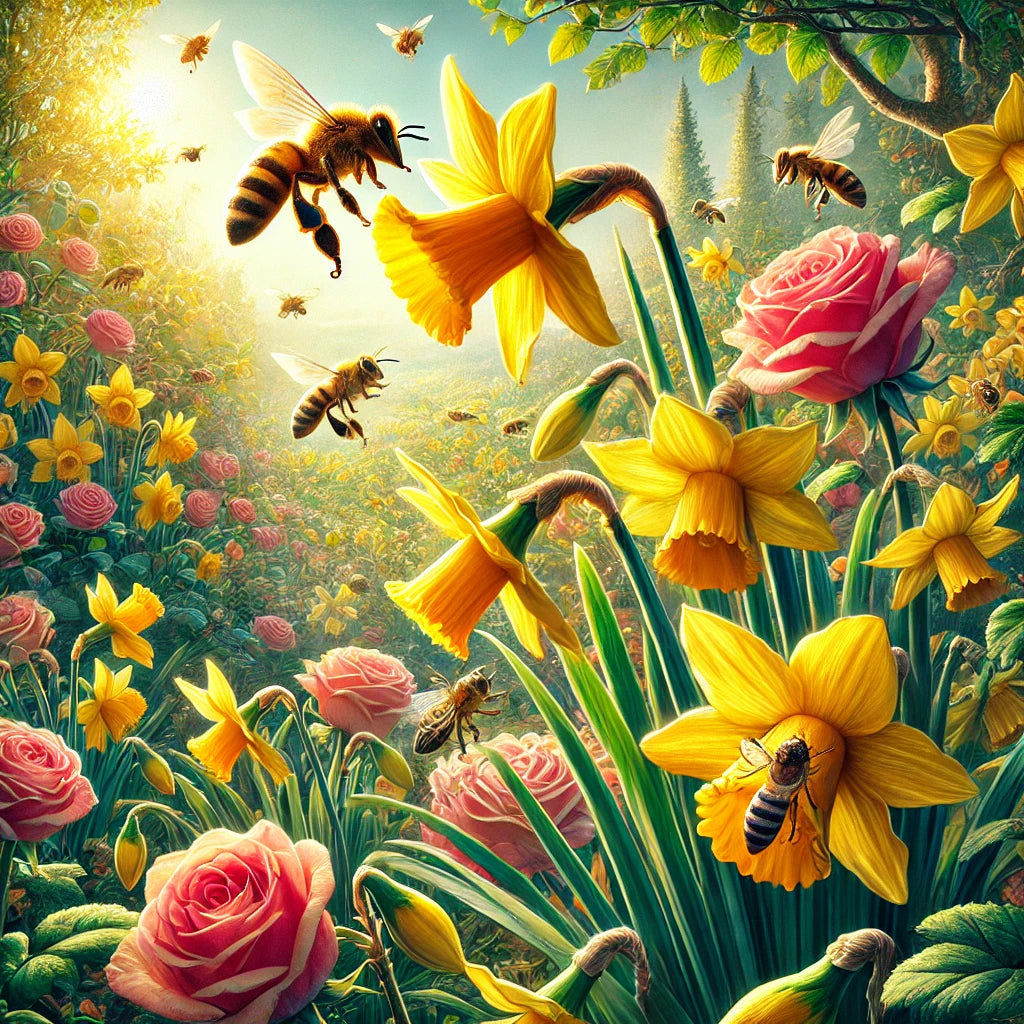Bees are selective in the flowers they pollinate, and both daffodil pollen and roses illustrate why certain flowers don’t appeal to these crucial pollinators. While daffodils add beauty to gardens, they don’t provide much nectar, which is why bees often avoid them. Similarly, roses, particularly hybrid varieties, offer little value to bees, leaving them uninterested in these blooms.
Daffodil Pollen and Pollination
Daffodils are not typically attractive to bees because many modern daffodil varieties have lost their nectar-producing traits through selective breeding. While daffodil pollen can still be viable, it’s rarely sought after by bees. Daffodils primarily reproduce through bulbs rather than relying on pollinators, making bees largely unnecessary for their propagation.
As a beekeeper, it’s important to plant flowers that offer both nectar and pollen, which are essential for supporting your hives. If you're considering daffodils in your garden, keep in mind that they won't be a significant resource for your bees. However, the variety in your garden's ecosystem can still indirectly support overall biodiversity.
Why Don’t Bees Pollinate Roses?
Roses, particularly hybrids, are another flower that bees often overlook. Hybrid roses, bred for their aesthetic qualities, have lost much of their fragrance and nectar production, making them less appealing to bees. Interestingly, if a hybrid rose’s graft is damaged and it reverts to its rootstock, it may produce a variety that is more attractive to bees. In such cases, you may notice bees buzzing around these “wild” roses, but most modern roses will not draw bees.
How to Support Your Bees
If you’re managing a garden or starting a bee farm, focus on planting flowers that offer nectar-rich rewards for your bees. Flowers like lavender, sunflowers, and clover are excellent choices. Additionally, you can use bee trap attractants to help guide bees toward the right plants and maximize pollination. Knowing how to start a bee farm with the right mix of plants ensures that your bees thrive year-round.
Enhance Your Beekeeping with Swarm Commander
While daffodil pollen and roses may not interest bees, there are plenty of flowers you can plant to create a bee-friendly garden. By focusing on nectar-rich plants and using tools like bee trap attractants, you can ensure your garden supports the health and productivity of your bees. Creating a balanced environment will benefit your hives and the biodiversity of your surroundings.
Maximize your garden's potential with the right tools from Swarm Commander. Visit Swarm Commander to explore products like beetle traps for beehives and guidance on how to start a bee farm and bee hive relocation to create a pollinator-friendly space.
Frequently Asked Questions About Daffodil Pollen & Why Bees Don’t Pollinate Roses
Q1. Why don’t bees visit daffodils?
Bees don’t visit daffodils because these flowers provide little nectar and have lost many of their attractive qualities through selective breeding.
Q2. Do bees pollinate roses?
Most hybrid roses don’t attract bees due to their low nectar content, but wild rose varieties can draw in pollinators.
Q3. What are good flowers for bees?
Bees thrive on flowers like lavender, sunflowers, and clover, which offer plenty of nectar and pollen.
Q4. How can I support my bees with more pollination options?
Consider planting a variety of nectar-rich flowers and use bee trap attractants to help guide bees to those plants.
Q5. What flowers should I avoid if I want to attract bees?
Avoid flowers like hybrid roses and daffodils, as they don’t provide enough nectar to attract bees.



